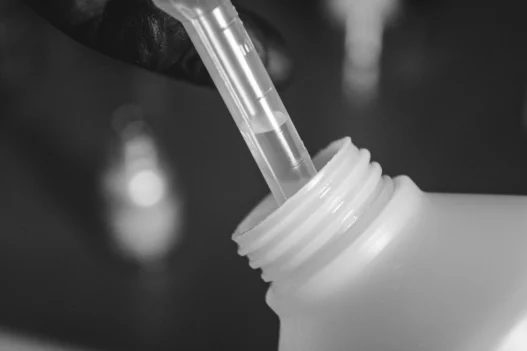1-Ethyl-2-methylbenzene, also known as ethyltoluene, plays a significant role in everyday life as a solvent in numerous industries. This compound is commonly used in cleaning products, paints, and adhesives due to its ability to dissolve a wide range of substances. Additionally, it is utilized in the manufacturing of fragrances, flavors, and pharmaceuticals. The versatility of 1-Ethyl-2-methylbenzene makes it an essential component in various consumer products that are encountered on a daily basis.
Table of Contents:
- 💡 Commercial Applications
- ⚗️ Chemical & Physical Properties
- 🏭 Production & Procurement
- ⚠️ Safety Considerations
- 🔬 Potential Research Directions
- 🧪 Related Compounds
💡 Commercial Applications
1-Ethyl-2-methylbenzene, also known as ethyltoluene, is a compound commonly used in commercial and industrial applications. It is utilized as a solvent in the paint and coatings industry, providing a stable medium for the dispersion of pigments and resins. Additionally, it is used as a diluent in the production of adhesives, sealants, and printing inks due to its low viscosity and high solvency power.
In terms of drug and medication applications, 1-Ethyl-2-methylbenzene is not commonly utilized in the pharmaceutical industry. However, it may find applications in certain formulations such as topical creams or ointments. Its solvent properties can aid in the suspension of active ingredients and enhance drug delivery through the skin. Nonetheless, its use in this field is limited compared to its industrial applications.
⚗️ Chemical & Physical Properties
1-Ethyl-2-methylbenzene, also known as ethyltoluene, appears as a colorless liquid with a sweet, aromatic odor resembling that of gasoline. Its chemical structure consists of a benzene ring substituted with an ethyl group and a methyl group.
With a molar mass of 134.21 g/mol and a density of 0.87 g/cm³, 1-Ethyl-2-methylbenzene is lighter than common food items such as sugar (molar mass: 342.3 g/mol, density: 1.59 g/cm³) and salt (molar mass: 58.44 g/mol, density: 2.16 g/cm³).
1-Ethyl-2-methylbenzene has a melting point of -98°C and a boiling point of 136°C, which is lower than that of common food items like butter (melting point: 32-35°C, boiling point: 100°C) and sugar (melting point: 186°C, boiling point: decomposes).
This compound is insoluble in water but soluble in organic solvents. It has a low viscosity compared to common food items like honey (high viscosity) and milk (moderate viscosity).
🏭 Production & Procurement
1-Ethyl-2-methylbenzene, also known as ethyltoluene, is primarily produced through the alkylation of toluene using ethylene. This reaction takes place in the presence of a suitable catalyst, such as aluminum chloride or sulfuric acid, leading to the formation of 1-Ethyl-2-methylbenzene as a byproduct.
The procurement of 1-Ethyl-2-methylbenzene involves industrial-scale production facilities equipped with the necessary equipment for handling and storing hazardous chemicals. Once produced, the compound is typically transported in bulk via tank trucks or railcars to various manufacturing facilities for further processing or distribution.
In terms of transportation, 1-Ethyl-2-methylbenzene is classified as a hazardous material due to its flammable nature. Therefore, strict regulations and safety protocols must be adhered to during its transportation to prevent accidents or spillage. It is essential for those involved in the handling and transportation of 1-Ethyl-2-methylbenzene to be properly trained and equipped to ensure the safe and efficient delivery of the compound.
⚠️ Safety Considerations
Safety considerations for 1-Ethyl-2-methylbenzene, also known as ethyltoluene, must be carefully taken into account due to its flammable nature. This compound should be stored in a cool, well-ventilated area away from sources of ignition. When handling, it is essential to wear appropriate personal protective equipment, such as gloves, goggles, and a lab coat, to prevent potential skin and eye irritation.
Hazard statements for 1-Ethyl-2-methylbenzene include “Highly flammable liquid and vapor,” “Causes skin irritation,” and “Causes serious eye irritation.” These statements highlight the potential risks associated with exposure to this chemical, emphasizing the importance of proper handling and storage procedures to minimize the likelihood of accidents or injuries.
Precautionary statements for 1-Ethyl-2-methylbenzene recommend storing the compound in a well-ventilated place, keeping it away from heat, sparks, and open flames. It is advised to use personal protective equipment, such as gloves and goggles, when handling this substance to prevent skin and eye irritation. In case of exposure, immediate action should be taken, including rinsing affected skin or eyes with water and seeking medical advice if irritation persists.
🔬 Potential Research Directions
One potential research direction for 1-Ethyl-2-methylbenzene includes studying its reactivity and potential applications in organic synthesis. This compound’s unique structure may lead to the discovery of novel reactions and pathways for the synthesis of complex molecules.
Another avenue of research could involve investigating the toxicological properties of 1-Ethyl-2-methylbenzene, as understanding its effects on biological systems is crucial for assessing its safety in various applications. Additionally, exploring its environmental fate and impact could provide valuable information for regulatory purposes and environmental risk assessments.
Furthermore, examining the physical properties of 1-Ethyl-2-methylbenzene, such as its boiling point, melting point, and solubility, could contribute to a deeper understanding of its behavior in different conditions. This information could have implications for its use in industries such as pharmaceuticals, polymers, and agrochemicals.
🧪 Related Compounds
1,2-Diethylbenzene is a similar compound to 1-Ethyl-2-methylbenzene due to its molecular structure. In 1,2-Diethylbenzene, two ethyl groups are situated on adjacent carbon atoms of the benzene ring, similar to the ethyl and methyl groups in 1-Ethyl-2-methylbenzene. This structural similarity results in comparable chemical properties and reactivity between the two compounds.
1-Ethyl-3-methylbenzene is another compound that shares similarities with 1-Ethyl-2-methylbenzene in terms of molecular structure. In 1-Ethyl-3-methylbenzene, an ethyl group and a methyl group are attached to different carbon atoms of the benzene ring, similar to the arrangement in 1-Ethyl-2-methylbenzene. This structural resemblance leads to comparable physical and chemical characteristics between the two compounds.
Additionally, 1,4-Diethylbenzene is a compound with a molecular structure akin to 1-Ethyl-2-methylbenzene. In 1,4-Diethylbenzene, two ethyl groups are positioned on carbon atoms that are four positions apart on the benzene ring, similar to the ethyl and methyl groups in 1-Ethyl-2-methylbenzene. Due to this similarity in structural arrangement, 1,4-Diethylbenzene exhibits analogous properties and behaviors to 1-Ethyl-2-methylbenzene in various chemical reactions and interactions.







